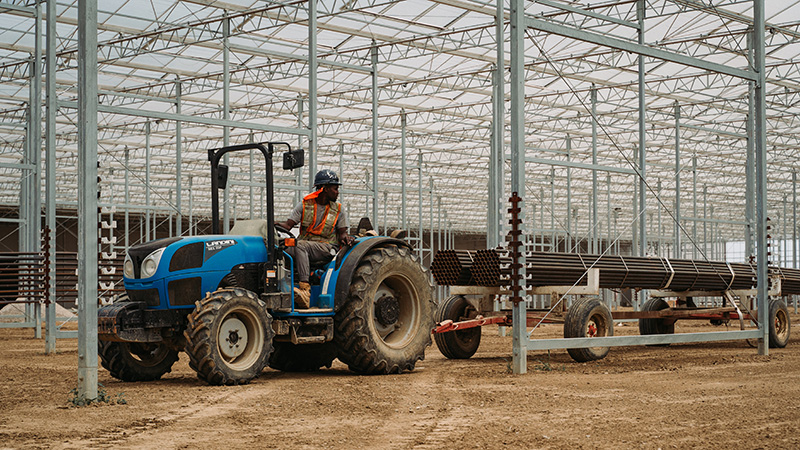How Photobleaching Can Ruin Your Cannabis Crop
 Current dynamics in the cannabis market are putting heightened pressure on growers to deliver the most marketable, consistent, and high-quality products possible — and push their plants harder than they ever have before. Deploying lighting strategies that maximize cannabis’ ability to absorb light are critical to optimizing yields and results, but can cause photobleaching when taken too far.
Current dynamics in the cannabis market are putting heightened pressure on growers to deliver the most marketable, consistent, and high-quality products possible — and push their plants harder than they ever have before. Deploying lighting strategies that maximize cannabis’ ability to absorb light are critical to optimizing yields and results, but can cause photobleaching when taken too far.
While photobleaching doesn’t necessarily impact yields, terpene chemistry, or potency, it drastically reduces consumer marketability, which is more important than ever in hypercompetitive, saturated cannabis markets.
In a recent article on Fluence.Science, Lead Scientist David Hawley, who leads the scientific research initiative at Fluence, outlines the problems associated with photobleaching, aka the destruction of chlorophyll. When this pigment is destroyed, tissues are left with an off-white bleached appearance. Photobleaching is predominantly induced by applying too much of the wrong light to plants during flower development. When this happens, the plant loses its ability to correctly process the incoming light energy, disrupting systems inside the plant and destroying chlorophyll.
One of the most common problems growers encounter in commercial cannabis production is bleaching of floral buds at the top of the canopy. Bleached buds are devalued in the market, perceived to be less potent, aesthetically unappealing, and have an unpleasant flavor. To make matters worse, floral buds at the top of the canopy typically have the highest potency and fetch the highest market price, posing serious risks for a grower’s bottom line.
Avoiding Photobleaching
The easiest way to avoid this problem in cannabis buds is to use a balanced, broad white spectrum. Under a balanced spectrum, most cannabis cultivars won’t exhibit symptoms up to a photosynthetic photon flux density (PPFD) of 2,500 μmol/mˉ²/sˉ¹, well above PPFD levels where you’d traditionally see photobleaching with sub-optimal spectra.
If growers are using a more red-rich spectrum — which induces photobleaching at much lower levels — photobleaching also can be prevented by reducing total light intensity. Fluence’s research has observed that reducing PPFD down to 500 μmol/mˉ²/sˉ¹ will help some cultivars remain unbleached even when the supplemental light intensity contains up to 95% red photons. This decrease in photobleaching comes strongly at the expense of final yields, since the lower light intensities used aren’t driving photosynthesis as hard. Fluence’s research has shown that up to a PPFD of around 1800 μmol/mˉ²/sˉ¹, a 1% increase in PPFD, leads to a 1% increase in final yields. The more growers have to throttle back on intensity to compensate for poorly optimized light spectrum choices, the more they’ll pay when it comes time to harvest.
Modifying the lighting itself is not the only way to reduce the risk of photobleaching, although research into these effects is still in very preliminary stages. Past research has shown that pre-heating treatments induce photobleaching in cucumbers, leading to the possibility that cooling treatments might help reduce excess photobleaching. Genetics also play a critical role in determining how likely a cannabis plant is to exhibit photobleaching. Fluence’s research team has observed that some cannabis crops will exhibit photobleaching even under ideal environmental conditions, meaning that some plants are simply more likely to exhibit photobleaching regardless of circumstances.
A top priority is to address practical production questions that affect growers today. Fluence is actively investigating exactly what fractions of red light and light intensities induce bleaching. Discovering which cultivars are most susceptible to photobleaching and identifying their genetic lineages will also allow the company to better advise growers on optimizing their cultivar selections and lighting strategies.
“We’re seeking to better define the relationships between photobleaching, chemical potency, and consumption experience,” Hawley says. “Though current data suggests these traits may be independent, it’s too early to make a definitive conclusion, and consumer feedback suggests at least a strong correlation between these traits.”
To learn more, including how photobleaching impacts cannabis quality, check out the original article from Hawley here.









